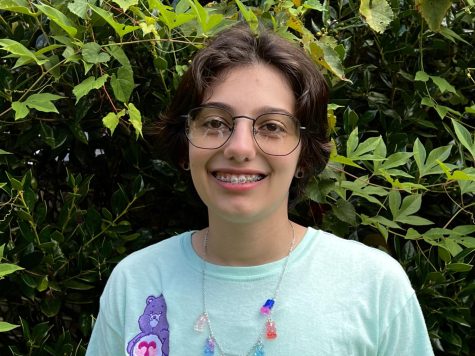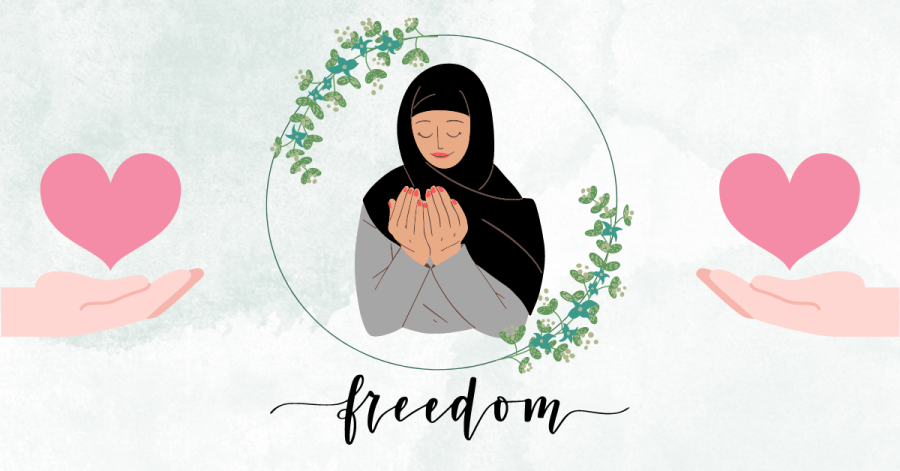Media arts bring awareness for Iranian Women
“When we change and grow, we will see a world we never would have known.”
The concept of change has been promoted globally for many years. Now, it’s time to support the women of Iran as they fight for their natural rights.
In September 2022, a woman named Mahsa Amini was arrested by Iran’s Guidance Patrol for incorrectly wearing her hijab. Three days later, she died in Iranian Police custody at just 22 years old. After two reporters, Niloofar Hamedi and Elahe Mohammadi, released the information to the public, the protests began.
In support of the movement, different forms of artistic media such as music, movies and art galleries have created pieces and playlists in their honor. Leading entertainment companies have participated including Spotify, Sundance Film Festival and San Francisco’s Art Museum.
Music is known for bringing groups of people together. Spotify is the world’s leading music streaming service with over 456 million users. The platform is known for their playlist compatibility and personally generated playlists. Spotify also makes playlists specifically for different events or groups of people. One of the playlists they’ve released recently is the Women of Iran playlist.
The Women of Iran playlist was created by Iranian-American Leila Kashfi. The playlist is meant to heighten the voices of Iranian women and their support system across the globe. It also encourages and spreads the arts of Iranian culture such as music, dance, crafts, such as decorative woods, architecture and more.
The playlist ranges from ‘perennial favorites for the last five decades’ to ‘modern songs that speak to the struggle of living under the Islamic Republic of Iran.’ Spotify is also adding in playlist clips for the songs to share Iranian views on expression and freedom. In this time, it’s important to make sure these voices are heard to promote the possibility of change.
Sundance Films is one of the largest film festivals in America held in Utah every year. Many films are submitted to the festival for reviewing, including “Shayda” by director Noora Nisari. “Shayda” tells the story of an Iranian immigrant woman in Australia taking her six year old daughter to a shelter to get away from her husband. The movie is meant to tell the story of her mother and herself. This year, Shayda received the award “World Cinematic Drama.”
Another film featured recently was “The Persian Version,” a family drama directed by Maryam Keshavarez. The movie travels through the life of Leila, an Iranian-American immigrant, who wants to keep her personal life separate from her family life. Its purpose is to show the challenges of balancing two different cultures, especially two cultures against each other. This year, “The Persian Version” received two awards at the festival, the Waldo Salt Screenwriting Award and the Audience Award.
Both of these films come together to show how women in Iran have been pushing the bar and putting themselves at risk for many years. In the beginning, these movies were not intended to be a representation of the movement. However, due to timing and themes, they fit perfectly.
Art museums have been a form of entertainment for hundreds of years. The San Francisco Asian Art Museum is a museum with the purpose of helping people learn more about Asian cultures. While they have Iranian art located inside the museum, from Jan. 26 – Jan. 28 they brought the Iranian art outside for everyone to see.
This event wouldn’t have been possible without the collaboration between MOZAIK Philanthropy and ArtRise Collective. MOZAIK Philanthropy is known for using art forms to address environmental and social justice. ArtRise Collective’s main goal is to find the intersection between art mediums and revolutionary tactics. The project was titled “Woman, Life, and Freedom,” which was originally a Kurdish slogan. 30 pieces of art were displayed every night from 6-10pm, most of them by Iranian artists. An online version was created to keep the project alive for a long time, it can be found on MOZAIK Philanthropy’s website under future art awards.
There are many other ways people are using art to show their support such as TikTok videos, billboards and concerts. When people come together, it strengthens the possibility of change and reformation. Art is a medium used for expression or explanation. This time, it was used for advocacy and respect.





